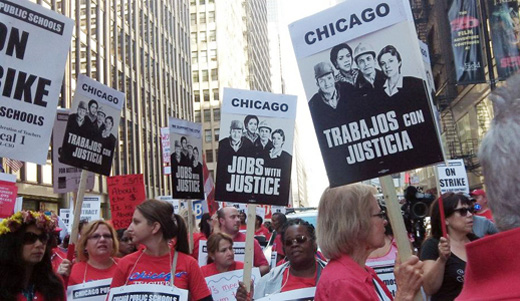
WASHINGTON (PAI) – The nation’s unemployment rate was 7.9% in January, the Bureau of Labor Statistics said, up 0.1% from December’s figure. A separate survey showed businesses claimed to create 157,000 new jobs last month.
The number of unemployed rose by 126,000 to 12.33 million. Another 161,000 people dropped out of the labor force, bringing that figure to just over 89 million.
Some 4.71 million jobless workers (38.1%) in January were unemployed for more than 26 weeks, meaning they exhausted their state unemployment benefits. That’s 58,000 fewer than in December, when 39.1% of jobless workers were long-termers.
“The average duration of unemployment spells dropped by two weeks, the largest ever,” added Dean Baker of the pro-worker Center for Economic and Policy Research. “This is obviously the result of the reduced length of benefit duration.
“There clearly was no surge in employment in response to workers losing benefits. Apparently many simply gave up looking for work,” he added. Baker did not say so, but jobless benefits cuts are in GOP-run states, like Michigan and Florida.
The jobless rate understates the depth of the nation’s slow recovery from the Great Recession, also known as the Bush Crash: Combined, BLS said the unemployed, those working part-time when they really want full-time jobs and workers so discouraged they stopped seeking work totaled 20.9 million workers, or one of every seven (14.4%).
Factories gained 4,000 jobs in January, to 11.95 million. There were 1.2 million jobless factory workers (7.9%). Construction gained 28,000 jobs in January, with virtually all that increase at specialty trade contractors. But there were 13.22 million jobless construction workers (16.1%). Construction union leaders say the real unemployment rate is closer to double that.
Service firms claimed they added 130,000 jobs, with almost half of those in two low-paying sectors: Retail trade (+32,600) and health care (+27,600). Governments shed 9,000 jobs in January, split almost evenly between layoffs in the federal government and in local schools.
“This is certainly not the rapid employment growth needed to drive down unemployment,” said Economic Policy Institute analyst Heidi Shierholz. “It’s like we’re in Bill Murray’s Groundhog Day: Each month we wake up to the same report, with all the indicators – employment, unemployment, labor force participation, hours, wages – painting the same picture over and over.” The jobs deficit “is so large that at January’s growth rate, it would take until 2021 to get back to the pre-recession unemployment rate” of 5%, she added.












Comments